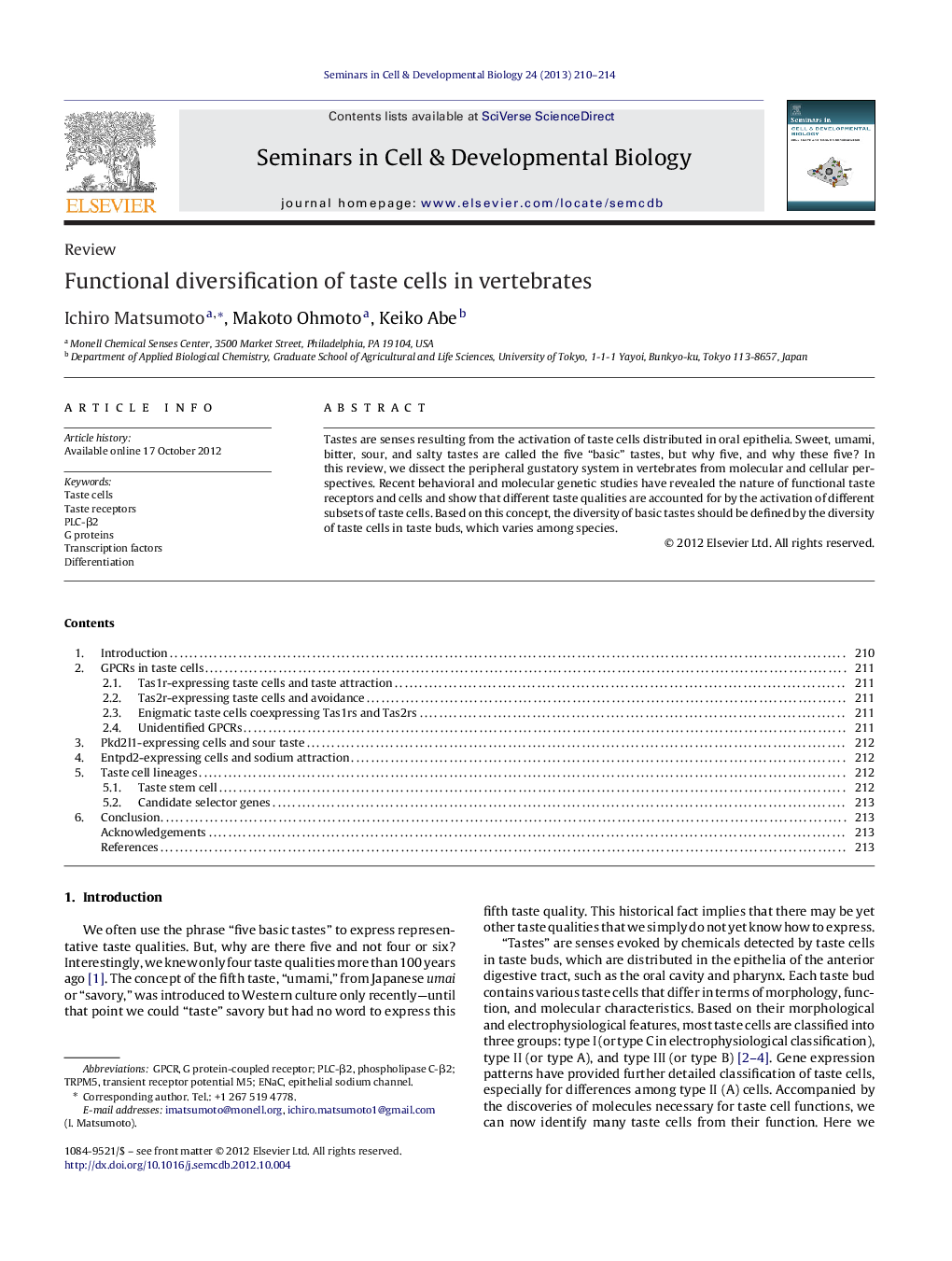| Article ID | Journal | Published Year | Pages | File Type |
|---|---|---|---|---|
| 2202822 | Seminars in Cell & Developmental Biology | 2013 | 5 Pages |
Tastes are senses resulting from the activation of taste cells distributed in oral epithelia. Sweet, umami, bitter, sour, and salty tastes are called the five “basic” tastes, but why five, and why these five? In this review, we dissect the peripheral gustatory system in vertebrates from molecular and cellular perspectives. Recent behavioral and molecular genetic studies have revealed the nature of functional taste receptors and cells and show that different taste qualities are accounted for by the activation of different subsets of taste cells. Based on this concept, the diversity of basic tastes should be defined by the diversity of taste cells in taste buds, which varies among species.
► Taste cells are dedicated to evoke single taste qualities. ► The diversity of basic tastes is associated with the diversity of taste cells. ► The number of taste cells varies depending on the vertebrate species. ► Each vertebrate species has its own gustatory world.
